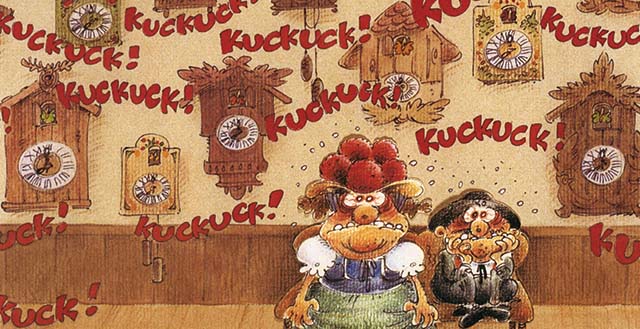
The Train-House Clock – the Design of the Century from Furtwangen
Friedrich Eisenlohr designed a cuckoo clock in the shape of a small house for a design contest of the Furtwangen School of Clock-Making. As architect, he was responsible for the buildings along Baden’s state-owned railway lines. Eisenlohr added a dial to the contours of a railway signalman’s house, thus completing the predecessor of today’s ever so famous cuckoo clock.
The School of Clock-Making wanted to change the old-fashioned appearance of the wooden clocks. It was thought that, with a face lift of sorts, the matronly Black Forest clock would be able to assert itself once again against the more youthful competition from the factories.
At the beginning, the “train-house clock”, with its strictly symmetrical ornamental lines, only appealed to modern buyers. After all, this clock was symbolic of the railway, the most progressive technology of the mid-19th century.
It was not until decades later that the cuckoo clock in the shape of a house was opulently decorated with wood carvings. It is this latter form that makes it the epitome of the Black Forest today, along with the pom-pom bonnet and the cherry cake.